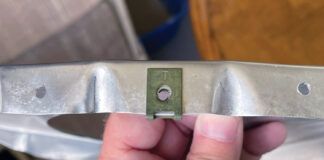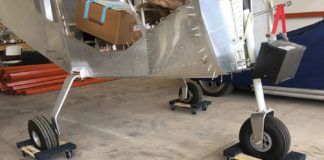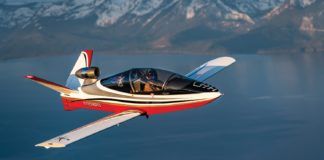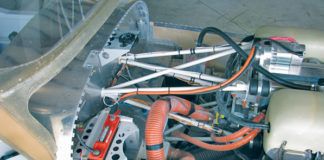When George Bogardus landed his “Little Gee Bee” homebuilt in the grass on The Mall in Washington, D.C., in 1947, its likely that he had no concept of the floodgates he helped open. He had flown his pre-WW-II single-seater 3000 miles from Oregon-the only state where homebuilt aircraft were permitted-to demonstrate to Congress the need to legalize homebuilts nationally. The resulting change to CAA (FAAs predecessor) regulations encouraged aspiring homebuilders across the country, and you know the result: Many thousands of homebuilt aircraft are now flying, and more are on the way. (For more on Bogardus, see Ron Wanttajas story “Milestones: Little Gee Bee,” KITPLANES, May 2006.)
The Regs
Even then, builders appreciated help with their projects. It came first from local sources and then, as the industry matured, from the designers, plans purveyors and ultimately the companies that sprung up to provide aircraft kits. This much we all know. But in recent years, the trend has been toward even more legitimate help-as opposed to so-called “hired guns” that do all the work for you, breaking both the spirit and letter of the rules. Witness in-house builder-assist programs as well as independent courses to help builders get a leg up with their skill sets.
Another Kind of Help
Wally and Neda Anderson of Eugene, Oregon, own Synergy Air, which provides courses to help builders of Vans Aircraft RV kits. Their background includes 30 years of owning a successful jewelry design and manufacturing business. For Wally, it also includes being enamored with aviation from an early age. “When I was in junior high school,” he said, “my uncle zero-Gd his PA-12 with me aboard, and a loose screwdriver hung in the air in front of my face. I thought it was the coolest thing ever.”
Wally earned his private license in 1972, and dissatisfaction with rental airplanes drove him into homebuilding. There were so many RVs that he joined the crowd and spent less than three years finishing his own RV-6, which he flew to Oshkosh in 1996 and took the Best Kitbuilt award. He then built an RV-6A kit, which also became an award-winner at the Arlington, Washington, and Oshkosh EAA events.
Wally was invited to join the Homebuilt Aircraft Council and is now on his second term. “Something that inspired me recently was Paul Pobereznys comment to our group that began, Folks like us…, and being included in his group of builders was really impressive. Thats why Ive started a new EAA chapter, 1457, in Eugene,” he said. In less than four months, the chapter had about 40 members.
The Andersons sold their jewelry business in 2005. “But I don’t sit around very well, and Synergy Air was already started,” Wally noted. His mentor and winner of the FAAs coveted Charles Taylor Master Mechanic Award, Larry Davis, encouraged Wally to help others as Davis had helped him.
“We trained people to build tail kits,” Wally said. “From there, it was a simple transition to spending full time on this.” Synergy Air now offers a one-day introductory course for people who will build sheet-metal aircraft, and there’s a week-long session that will send the student home with completed tail assemblies for Vans Aircraft kits up through the RV-9 (the RV-10 tail takes slightly longer).
“We have a symbiotic relationship with Vans Aircraft,” Wally said. “Thats because if people get off to a good start when they are building the tail kits [which are available separately], they buy additional kits to continue the process. Vans is careful not to endorse anyone, but they are supportive of the educational side of what were doing.”
Speeding Up the Process
The success of Synergy Airs courses in Eugene gave Wally another idea. What if people who opt for the quickbuild RV versions-with factory-built assemblies close to the edge of the Experimental/Amateur-Built 49% limit-could learn tricks and techniques to complete their aircraft more easily and quickly-and result in a safer airplane at the end? The course would touch on areas not covered in detail in the kit instructions and drawings, and it would include hands-on practice with at least one particularly difficult area of homebuilding: attaching the canopy to its frame.
Rather than hold the new course in Eugene, the Andersons decided to organize it like a retreat, and they put their large vacation home in Sunriver, Oregon, to use. All summer and during the Mt. Bachelor winter ski season, Sunrivers population is mostly vacationers who rent houses like the Andersons for the resorts golf courses, fishing and boating on the Deschutes River, horseback trips, hiking, winter sports and biking. There are 22 miles of paved bike paths (with tunnels under the roads) within the village, and rental houses come equipped with bicycles. Sunriver Airports runway is 5500 feet long, and visiting bizjets share ramp space with lightplanes and sometimes gliders and antique airplanes offering rides. The place hums…except during the fall and spring off seasons.
Launching the Course
The Andersons first Quickbuilder course took place last fall. Five students paid $1800 for the five-day course, including lunch prepared each day by Neda. Lodging in the vacation house costs $25 per person per night. The weather was too chilly and we were too busy to make use of the bicycles in the garage.
One student, Derek Nequest, lives near Shannon Airport in western Ireland. He completed the Synergy Air empennage course, had his tail shipped home, and was waiting for the quickbuild RV-7 wing and fuselage kits. For the new course, he flew by airline from Ireland to Portland, rented a car, and drove 4 hours to Sunriver.
Dan and Margie Prill drove from Montana. They are also building an RV-7. Dan currently flies a Cessna 185 and a Piper Super Cub. He retired from a heating, air conditioning and ventilating design business.
Paul Collins is a physician from Boise, Idaho, who flew his Aviat Husky to Sunriver Airport.
Rob Persson from Fremont, California, is another RV-7 builder. He has worked on his RV-7 about three years but had questions about the engine, wiring, panel and fiberglass work.
Terre Rogers from Molalla, Oregon, is building an RV-9A and has two fabric-covered airplane projects. He was also about to start work on a Bradley airplane kit.
Most of the course is based on PowerPoint presentations by Wally, with time for comments and questions. Neda had made up 18-section binders for each student, containing all of the slides.
The Curriculum
Heres a list of some of the topics covered with sample comments and tips:
Wing attachment, step by step. The photos should help anyone do it at home.
Wiring. Includes hands-on practice attaching BNC plugs to coax cable.
Instrument panel design. VFR and IFR options. Lots of tips.
Interior designs. Do-it-yourself sound-damping and cosmetic elegance are easier and less expensive than you think.
Seats. Budget for good ones. Before covering the foam cushions, sit on the foam seat for at least 2 hours before deciding it is acceptable.
Engines. Lycomings and the alternatives. Ignition systems. Pros and cons of specific systems and brands.
Engine cooling. How to make proper baffling and minimize air leaks. Theory and practice.
Engine installation. Buy your engine early and hang it on its mount at least six months before installing it. This will make cowl fabrication and properly fitting installation much easier.
Cowling attachment. Perma-Grit countersink cutters and abrasive blocks ease the effort.
Fiberglass done right. Two types of resin. Using the right cloth. Making ideal layups (resin and cloth should be equal by weight).
Selecting a painter. Good price, fast service, high-quality work. Pick two of the three.
Painting your airplane. Prep work. Eliminating pinholes.
Fuel-flow testing. Don’t skip this vital preflight step.
Weight and balance.
Inspecting whats most important.
Guides to certification.
Before that first flight.
Beyond the Classroom
Actually, classes were held in the Andersons comfortable living room, complete with snacks.
Beyond the living room, there is the garage, where the weeks big hands-on project stretched over three days: attaching the acrylic canopy to its aluminum frame. Wally had made canopy-attachment simulators for each student. Mounted on a board, the simulator consisted of a strip of aluminum representing the canopy frame and a piece of clear acrylic bent to represent the canopy. The objective was to attach the canopy to the frame securely and make a smooth, durable fillet between the two parts.
Wallys system is clever and involves a lot of steps. Before starting the process, he lists some important tips:
Protect the $1000+ canopy from scratches by covering it. Work in temperatures of at least 70 F. Use only epoxy resin (not polyester). Take your time. The steps are described in the presentation slides, but the major value is in actually doing them. Here is a summary of the process:
After smoothing the edge of the canopy using a Scotch-Brite wheel, attach the canopy to the frame with fuel tank sealant. Wally had completed this on each simulator.
Using wide, flexible 20-mil black Pasco PVC tape, the upper limit of the attachment fillet (on the acrylic) and the lower limit (on the aluminum frame) are defined by the tape edges. The area between the tapes becomes the fillet.
The exposed Alclad aluminum frame and the exposed canopy glass are scuffed for roughness, and green electrical tape is placed over the edge of both black tapes for visibility.
Strips of fiberglass cloth are epoxied to the canopy and frame between the tapes. Black dye is mixed into the epoxy resin for a professional-looking edge on the inside of the canopy.
Using a flexible plastic spreader, a mixture of resin and microballoons is applied to form a smooth, curved fillet that ends at the green tape edges.
After curing, the fillet is sanded smooth and covered with layers of bias-cut glass. Peel-ply (Dacron cloth that absorbs excess resin and doesn’t stick to the fiberglass) is pressed over the layup.
When cured, the peel-ply is removed and several coats of primer are applied and sanded, followed by pinhole eliminator. At this point the canopy and its frame should be ready for paint.
Extras
Sunriver is about 20 miles from Bend Airport, which is a hotbed of aviation businesses including Electronics International (engine and other monitoring systems) and Columbia Aviation, which manufactures a line of high-performance, four-seat, all-composite airplanes. Wallys course information on engine cooling comes from his own experience, NASA research, and from Columbias experimental test pilot, Sonja Englert. She is the aero engineer responsible for the cooling design in Columbias engine installations.
Englert is a homebuilder who flies a Pulsar and is building a motorglider of her own design. She has published four books on homebuilding topics. Partly because everyone in the course was interested in buying Englerts engine book, Wally arranged a tour of Columbia, and Englert not only sold her books but provided a tour of Columbias production facilities from the viewpoint of a design engineer/test pilot. Like other Columbia employees, she hopes that Cessna is the successful bidder for Columbia, which has been in Chapter 11 bankruptcy. Cessna CEO Jack Pelton has committed to keep Columbia in Bend if Cessna buys it.
Wally also arranged a tour of Electronics International, where we viewed some features of EIs latest aircraft monitoring systems.
Straw Poll Results
Polling Wallys students individually indicated that this first course was successful (worth the money and time). The Andersons also believe it was a success…as indicated by their plan to offer the same course again at their Sunriver house. For details on this and other Synergy Air courses, browse on over to www.synergyair.com. A direct link can be found at www.kitplanes.com.




